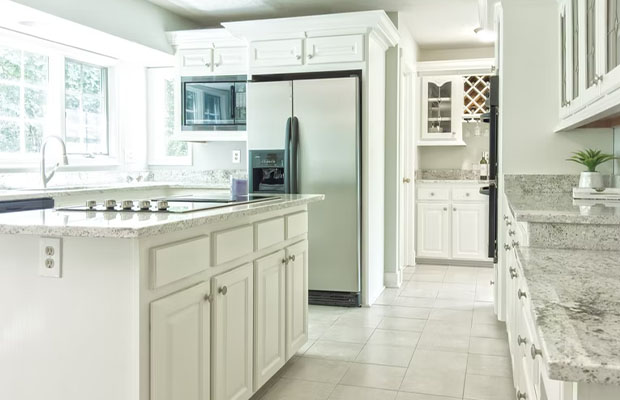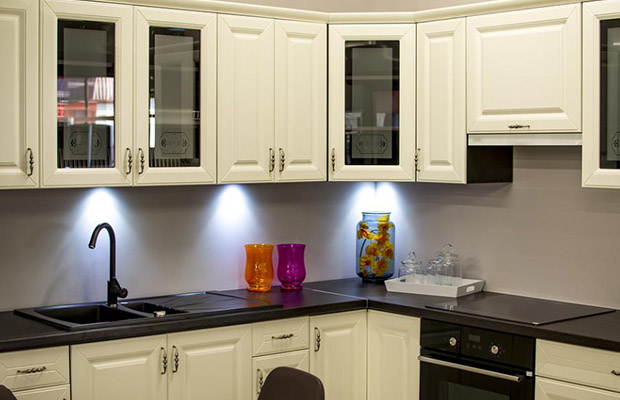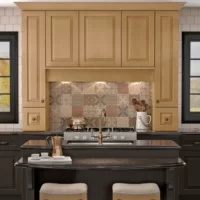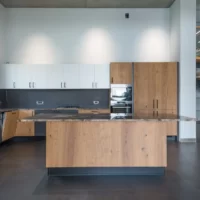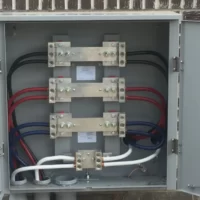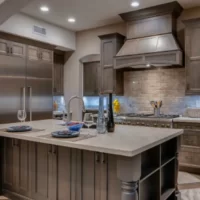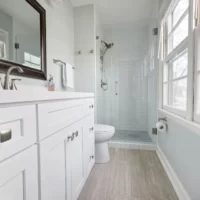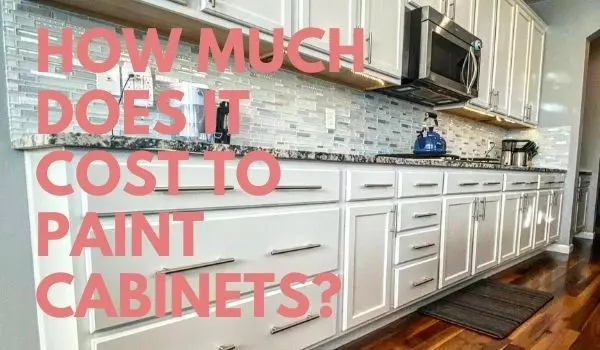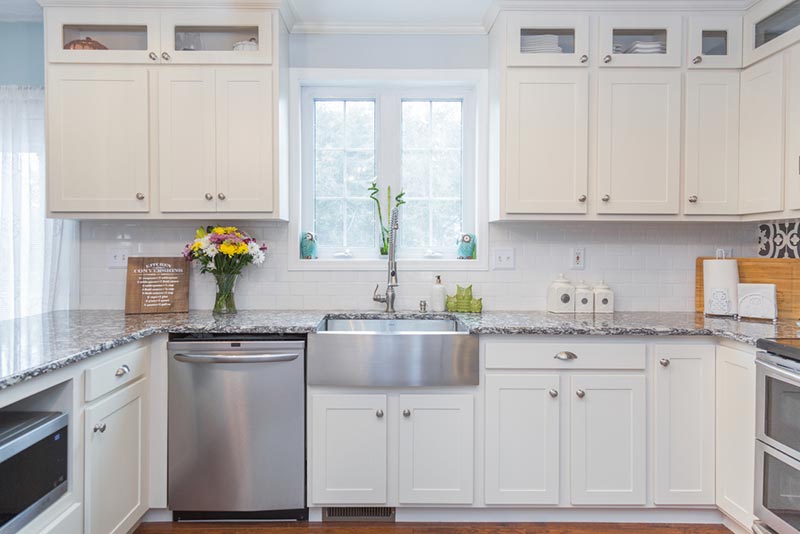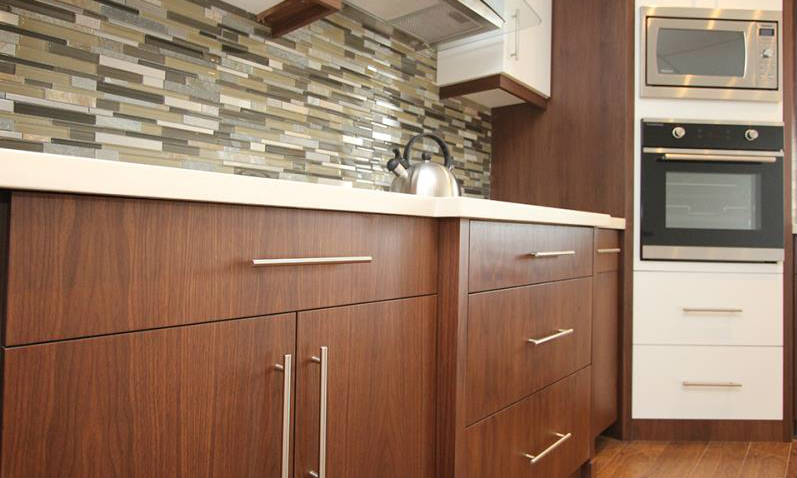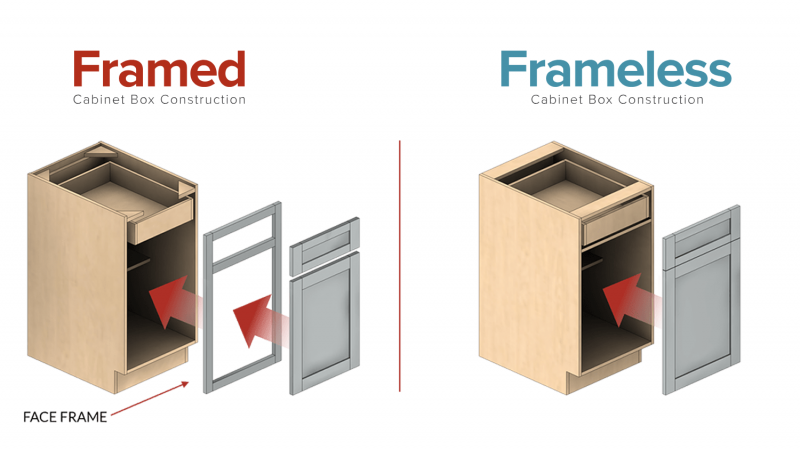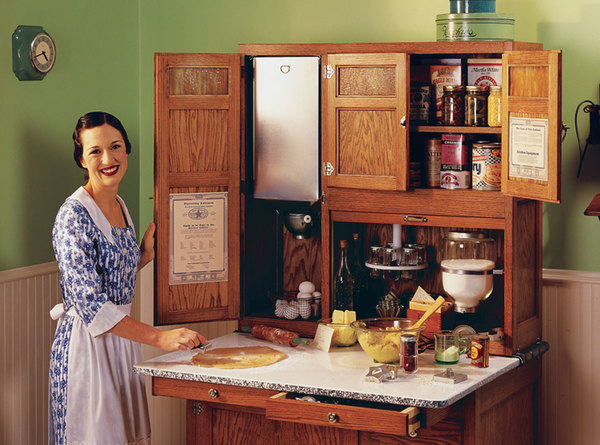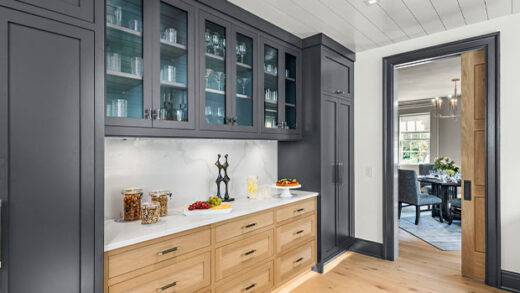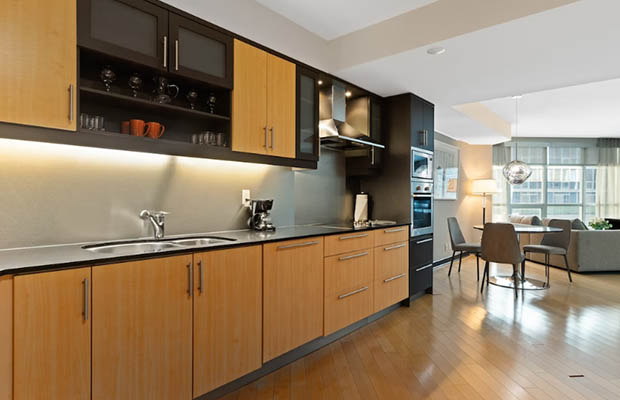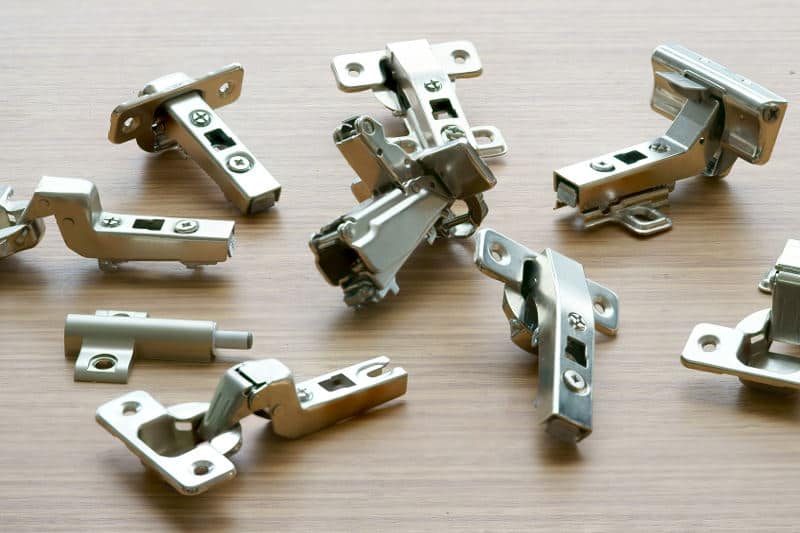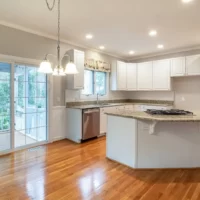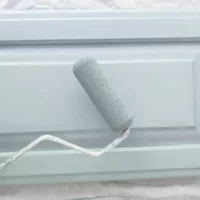Here is our guide to bamboo kitchen cabinets, which includes the material’s most popular finishes, styles, benefits and drawbacks, prices, and other essential details.
When used for kitchen cabinets, bamboo, which is occasionally mistaken for a type of wood, is actually a very hard-wearing grass that offers a number of benefits.
The great thing about bamboo is that it grows quickly and can be harvested every three to five years, unlike most hardwood trees, which take decades to mature. Bamboo keeps renewing itself every three years, unlike hardwood trees, which stop growing after being harvested, making it a truly sustainable option for cabinets, furniture, and flooring.
If you’re thinking about bamboo kitchen cabinets, keep reading for a thorough breakdown below.
Table of Contents
Characteristics of Bamboo
The distinctive nodes or knuckles of the stalks are frequently visible in bamboo wood, which has a distinctive linear grain. Although it is softer than the majority of hardwoods, it is remarkably resistant to cracks, chips, and dings. The natural warm or neutral color of bamboo kitchen cabinets tends to give your kitchen a bright but welcoming feel.
TIP: Since there isn’t much of a market for bamboo cabinets, there are only a few available sizes. To make sure bamboo will meet your kitchen’s needs, make sure to measure and design your new cabinets before making a decision.
You May Also Like: What Is A Humidor Cabinet?
Bamboo Kitchen Cabinets Pros and Cons
Below are the pros and cons we list.
Pros
- Bamboo has a low impact on the environment and offers a sustainable alternative to wood.
- It is a sturdy option for cabinetry because it can be just as hard as or even harder than oak or maple hardwoods.
- accepts darker finishes and stains admirably.
- With some warm, soapy water and a soft cloth, bamboo cabinets are simple to clean.
Cons
- Its affordability and environmental friendliness are impacted by the costs associated with transportation.
- Bamboo surfaces are susceptible to scuffs, just like all wooden cabinets.
- Limited options for size, style, and transportation may result from low demand.
Bamboo Cabinet Finishes
The most popular colors for natural bamboo kitchen cabinets are blonde and honey. Bamboo kitchen cabinets with a natural or water-based finish are advised for a modern or sleek kitchen. If you want a cozier kitchen, a dark cherry or chocolate stain will highlight the linear grain of the bamboo since it also takes stains well.
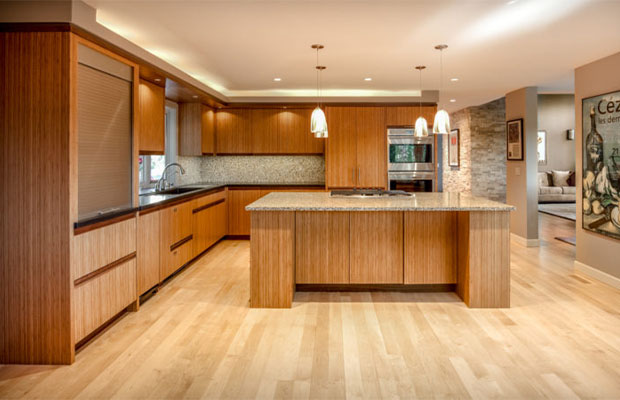
TIP: Although bamboo is resistant to dents, applying a protective coating will increase the longevity of your bathroom or kitchen cabinets. Maple or birch are probably better options if you’re looking for cabinets that are specially painted.
Bamboo Kitchen Cabinet Styles
We list five popular styles of bamboo kitchen cabinets.
Modern Bamboo Kitchen Cabinet
The answer is here if you want to improve your kitchen’s aesthetic appeal. Your kitchen’s cabinetry can be updated with a trendy bamboo kitchen cabinet.
Modern bamboo is the material of choice right now to spruce up cabinets. Additionally, it is used to make corner racks and slim drawers, which turn your kitchen into a completely new room in your house.
Additionally, real estate agents assert that trendy bamboo kitchen cabinets raise a home’s value.
Natural Bamboo Kitchen Cabinet
Because of their innate beauty and grandeur, bamboo kitchen cabinets are growing in popularity in a wide range of states and nations.
Consider choosing bamboo cabinets that are truly natural if you want to update your kitchen more quickly and effectively. Your kitchen will appear more rustic and old-fashioned if you use different materials.
Dark Bamboo Shaker Kitchen Cabinet
The attractive appearance, durability, and environmental benefits of dark bamboo shaker kitchen cabinets have made them popular throughout a number of regions. Additionally, compared to other types of wood, bamboo kitchen cabinets are said to be more environmentally friendly.
This is a result of bamboo’s quick growth. So, if you want to protect the environment, think about switching to bamboo kitchen cabinets.
Bamboo Plywood-Made Kitchen Cabinet
Bamboo plywood is commonly used to create bamboo kitchen cabinets. Plywood is simply natural bamboo that has been cut, milled, fabricated, and finished.
Bamboo plywood can be produced in a variety of colors and finishes for kitchen cabinets, as it is already in that state. If you value adaptability, plywood bamboo kitchen cabinets are undoubtedly a great choice.
Kitchen Cabinet in White Bamboo
Bamboo wood can be colored in a variety of ways, making it perfect for use in home interior design. Among the many different styles that are available are white bamboo kitchen cabinets. Here are some more kitchen cabinet designs.
White is advised because it appears shiny after washing. In comparison to other cabinet materials, bamboo kitchen cabinets require less upkeep.
Average Cost of Bamboo Cabinets
You might end up paying more for bamboo than for conventional hardwood because it’s still a relatively uncommon material for kitchen cabinetry. Additionally, bamboo is significantly heavier, which can greatly increase transportation costs. A typical kitchen should cost between $12K and $20K, and premium bamboo kitchen cabinets can cost up to $35K.
TIP: Rather than using full, solid bamboo, choose bamboo plywood that is then covered with traditional hardwood if you want to create the look of bamboo cabinets on a tighter budget.
Bamboo Kitchen Cabinet Ideas
We’ve provided some bamboo kitchen ideas below if you’re set on using bamboo cabinets in your kitchen. Create a mood board with a color scheme, accent items, hardware, and countertop options.
- Soft-brown bamboo cabinets add warmth to a minimalist kitchen.
- With natural, honey bamboo cabinets, you can create the impression of an open, airy space.
- Staining your bamboo cabinets with stone gray will give them a rustic or industrial appearance.
Is Bamboo Good for Kitchen Cabinets?
Yes, choosing bamboo for your kitchen cabinets helps the environment while also giving you a durable material that needs little upkeep. Additionally, bamboo has a pretty appearance.
It might surprise you to learn that bamboo wood has an amazingly straight grain and frequently reveals the distinctive clusters or knuckles of the stalks.
However, despite having a finer grain than other hardwoods, it is still very resistant to cracks, chips, and dents. Your kitchen will feel light and airy thanks to the warm or neutral color of bamboo kitchen cabinets.
Factors to Consider When Buying Bamboo Kitchen Cabinets
- Establish the floor plan. You must first assess the floor plan in order to find the ideal bamboo kitchen cabinet to fit. The size and layout both have an impact on your design ideas.
- Take Into Account Your Estimated Budget and Expected Function of Cabinet. Your financial constraints will influence the bamboo kitchen cabinet design you select. Different styles have varying costs. Depending on what you plan to use the kitchen cabinet for, you can choose from a variety of styles.
- Identify the Materials You Want and Request for Quotes. Choose the type of material you want for your bamboo kitchen cabinet. The floor plan might affect how much material is needed. As a result, you may get an exact price that you can adjust to fit your budget.
- Confirm the Layout. Ask your provider to evaluate the layout once you have supplied all of the requirements. If changes are thought to be necessary, you can still make them now.
Also Read:
FAQs
How Are Bamboo Kitchen Cabinets Made?
Bamboo kitchen cabinet are made from naturally-grown bamboo trees. Kitchen cabinets, drawers, shelves, and any other furniture that is desired are made from the wood that is harvested from these trees and processed into wood.
Are Bamboo Cabinets Durable?
Bamboo cabinets are a lovely, strong, and sustainable addition to any kitchen design or style because they’re as strong as or stronger than specific hardwoods and resistant to chips and cracks.
Are Bamboo Kitchen Cabinets Expensive?
Bamboo kitchen cabinets typically cost more because it is still an uncommon material for bathroom and kitchen cabinetry. Compared to other kitchen cabinet costs, transportation and material quality can also add significantly to the overall cost of bamboo cabinets.
How Do You Clean Bamboo Kitchen Cabinets?
Unlike other traditional hardwoods, bamboo cabinets don’t require oil treatment, making them incredibly simple to clean. To get rid of stubborn grease stains, wet a cloth with warm water and mild dish soap.
Are Bamboo Cabinets Environmentally Friendly?
In terms of furniture, cabinetry, and flooring, bamboo is regarded as a highly sustainable option because it is a grass that grows back every three to seven years.
Additionally, bamboo cabinets don’t require oil treatment, and using an environmentally friendly waterborne finish reduces the overall environmental impact even more. However, keep in mind that moving bamboo is challenging and that some methods of moving it can reduce its environmental friendliness.


